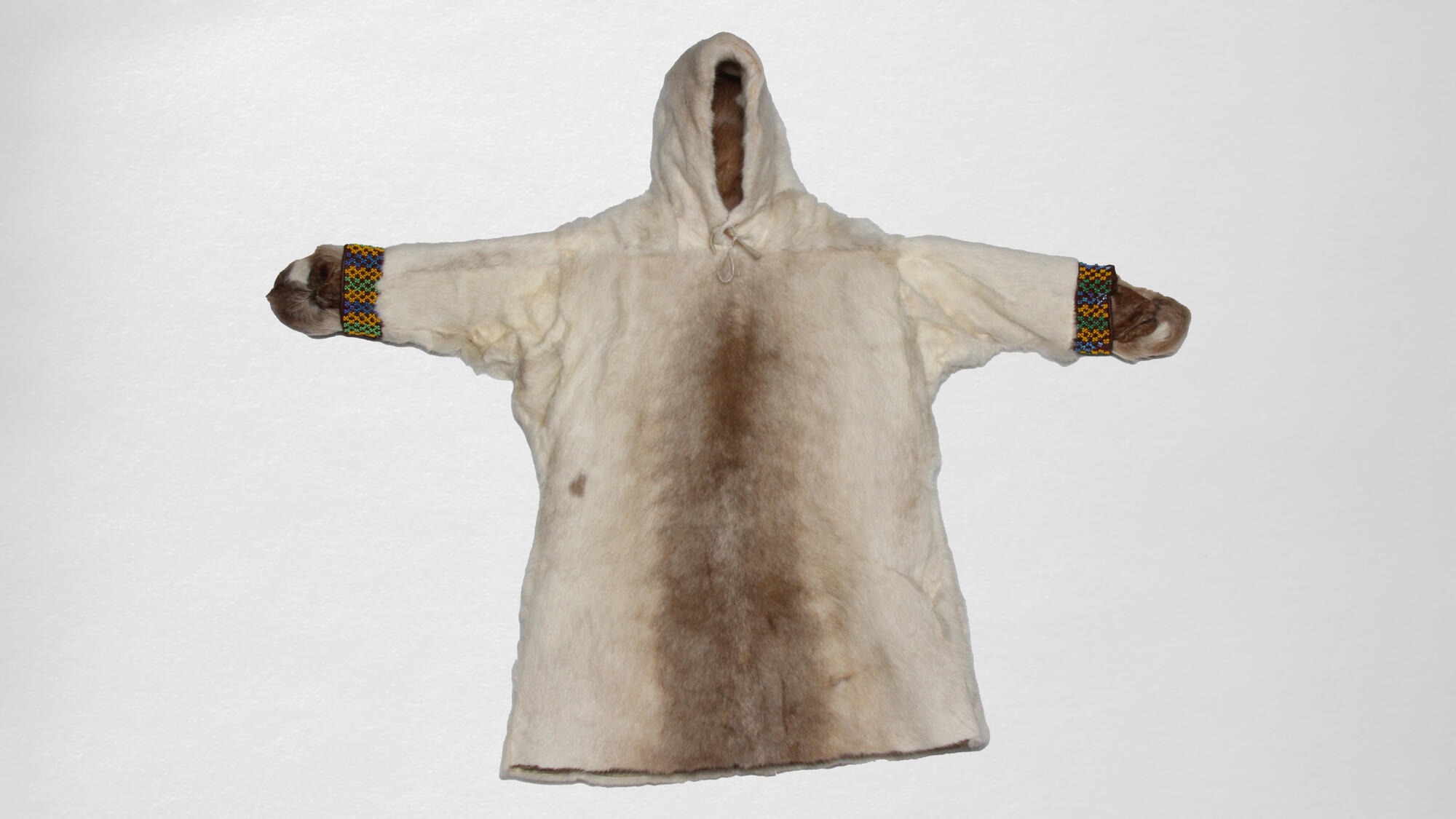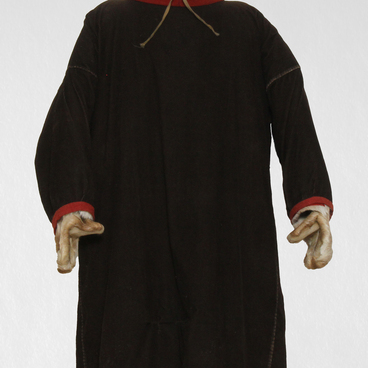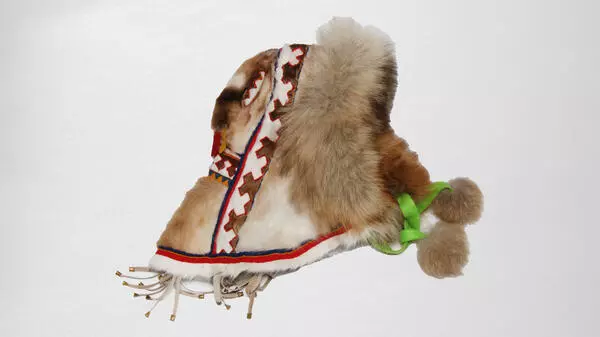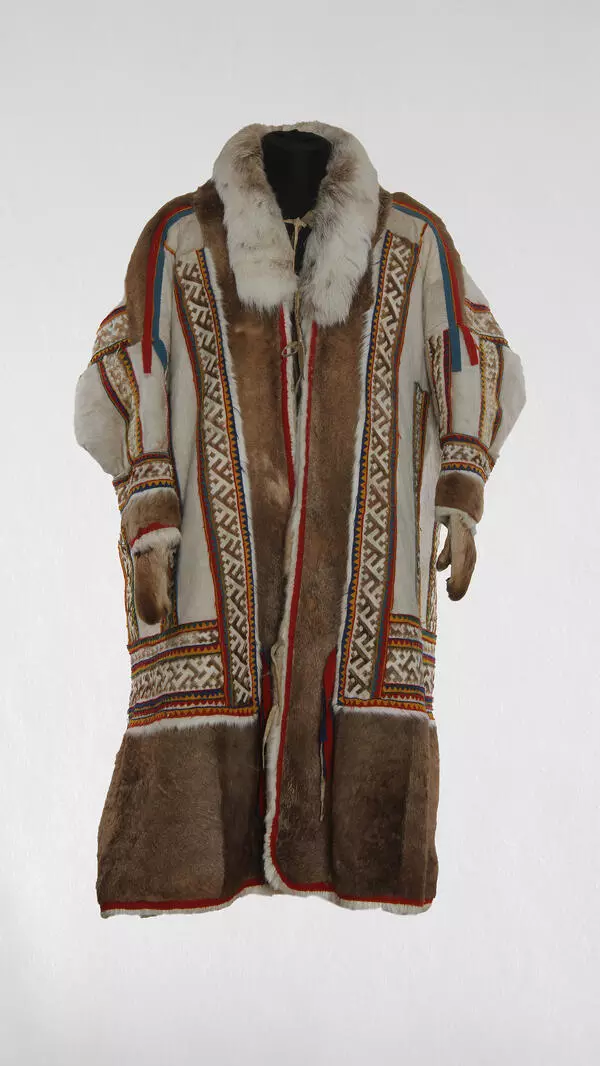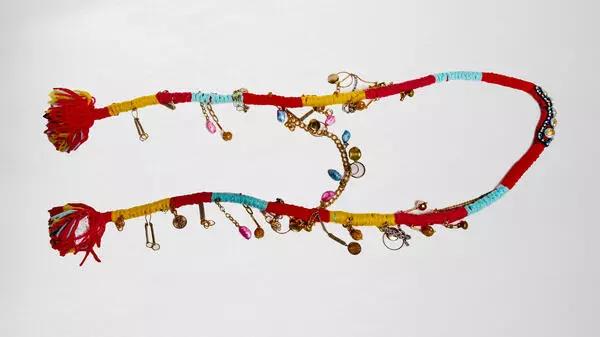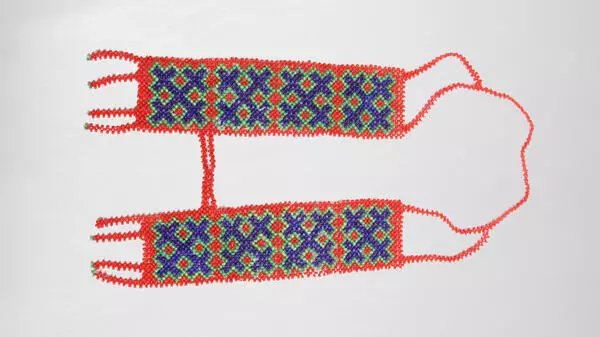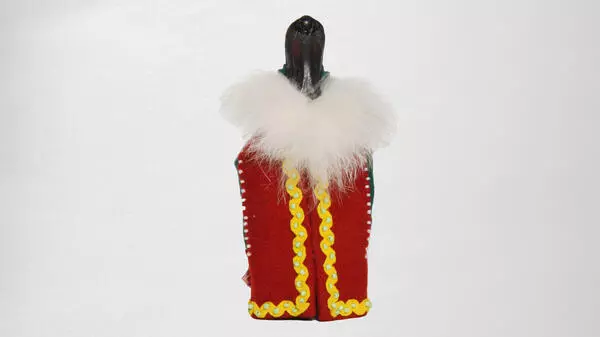The indigenous peoples of the North had a special attitude towards children. They were considered a gift from heaven and a great joy for the whole family, so the best materials were used to sew children’s clothes.
At the age of one to five or six years, the child was dressed in a fur coat cut from a whole piece and called “malitsa.” It was most often sewn in two layers, with fur both inward and outward. The malitsa consisted of a base (a fastened front part and a back) and a warm hood, sleeves, a hem and a lining.
Before cutting and sewing the malitsa, it was necessary to select and prepare the material. When choosing fur, it was necessary to take into account its color, as well as the texture and length of the pile. The children’s malitsas were sewn only from soft light skins. They were thoroughly scraped — cleaned of films and subcutaneous tissue with a special scraper. This process was repeated three or four times, with the skins dried and kneaded by hand during the intervals.
The skins were sewn in such a way that the pattern and direction of the fur would make them seem a single whole. To connect the parts, tendon threads, most often deer, were used.
The malitsa was comfortable because the hood and mittens were sewn to its base, so the robe did not leave a single open area of the body. Also, thanks to this design, the fur coat did not swing open during outdoor games and walks.
The hood, made of the skin from the head of a deer, preserved the natural outlines of the eye sockets, holes from the horns and ears of the animal. All these parts were decorated with national patterns, stripes of fur, bright cloth. In the Nenets tradition, such preservation of all the details on the skin from the deer head reminded that man and deer are inseparable and are the basis of life for each other.
Small bells or amulets were sewn to the sleeves of the malitsa from below. Legend has it that they drove evil spirits away with a melodic ringing of the metal.
With age, starting from six to seven years, girls and boys received different variants of clothes, which externally and functionally were already divided into women’s and men’s clothes. With these outfits, children were given certain social roles and tried to live up to them in everyday life.
At the age of one to five or six years, the child was dressed in a fur coat cut from a whole piece and called “malitsa.” It was most often sewn in two layers, with fur both inward and outward. The malitsa consisted of a base (a fastened front part and a back) and a warm hood, sleeves, a hem and a lining.
Before cutting and sewing the malitsa, it was necessary to select and prepare the material. When choosing fur, it was necessary to take into account its color, as well as the texture and length of the pile. The children’s malitsas were sewn only from soft light skins. They were thoroughly scraped — cleaned of films and subcutaneous tissue with a special scraper. This process was repeated three or four times, with the skins dried and kneaded by hand during the intervals.
The skins were sewn in such a way that the pattern and direction of the fur would make them seem a single whole. To connect the parts, tendon threads, most often deer, were used.
The malitsa was comfortable because the hood and mittens were sewn to its base, so the robe did not leave a single open area of the body. Also, thanks to this design, the fur coat did not swing open during outdoor games and walks.
The hood, made of the skin from the head of a deer, preserved the natural outlines of the eye sockets, holes from the horns and ears of the animal. All these parts were decorated with national patterns, stripes of fur, bright cloth. In the Nenets tradition, such preservation of all the details on the skin from the deer head reminded that man and deer are inseparable and are the basis of life for each other.
Small bells or amulets were sewn to the sleeves of the malitsa from below. Legend has it that they drove evil spirits away with a melodic ringing of the metal.
With age, starting from six to seven years, girls and boys received different variants of clothes, which externally and functionally were already divided into women’s and men’s clothes. With these outfits, children were given certain social roles and tried to live up to them in everyday life.
